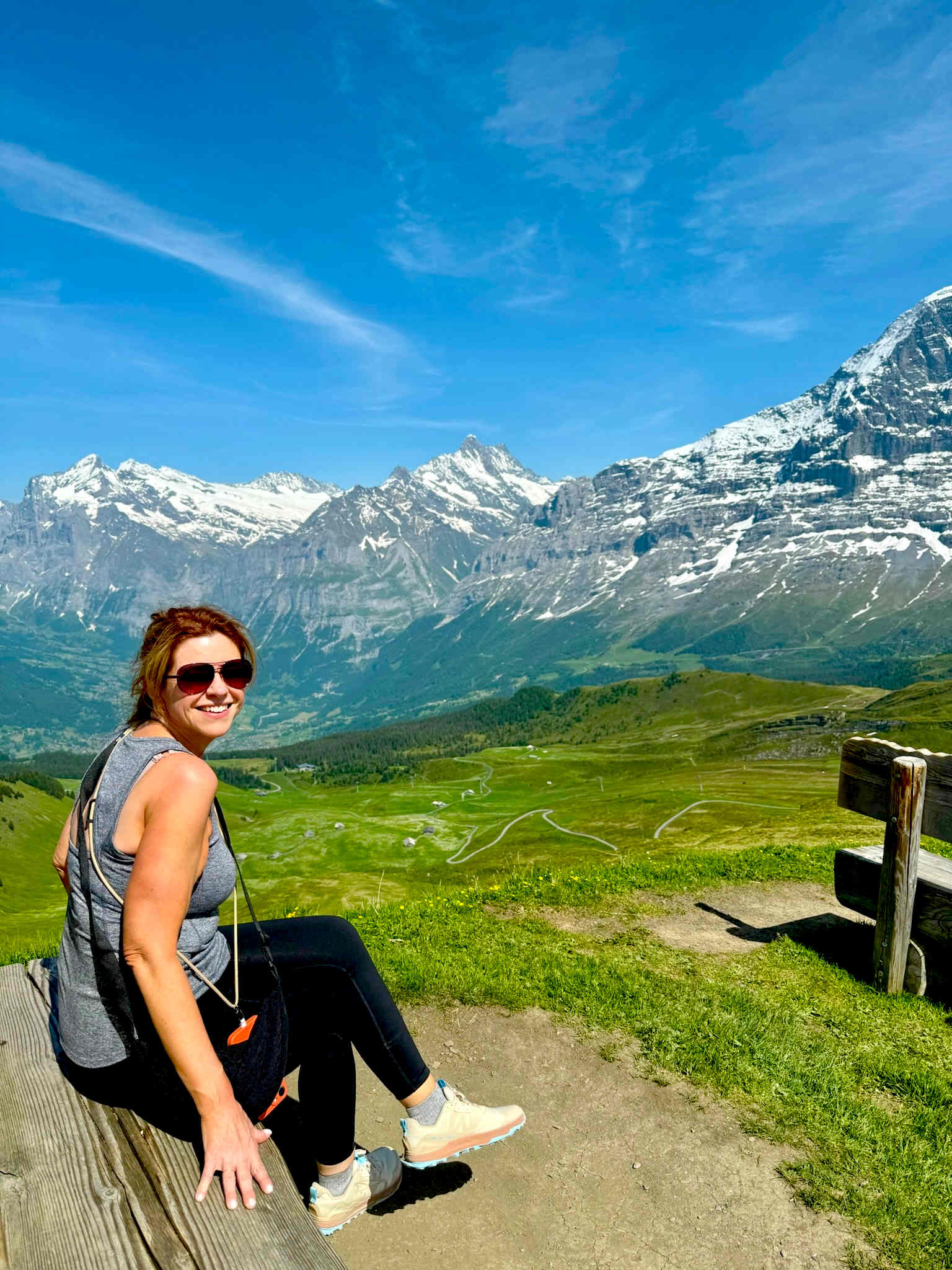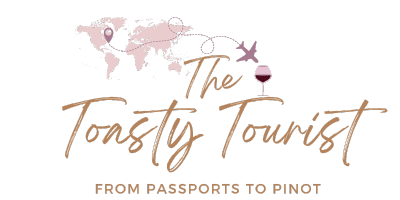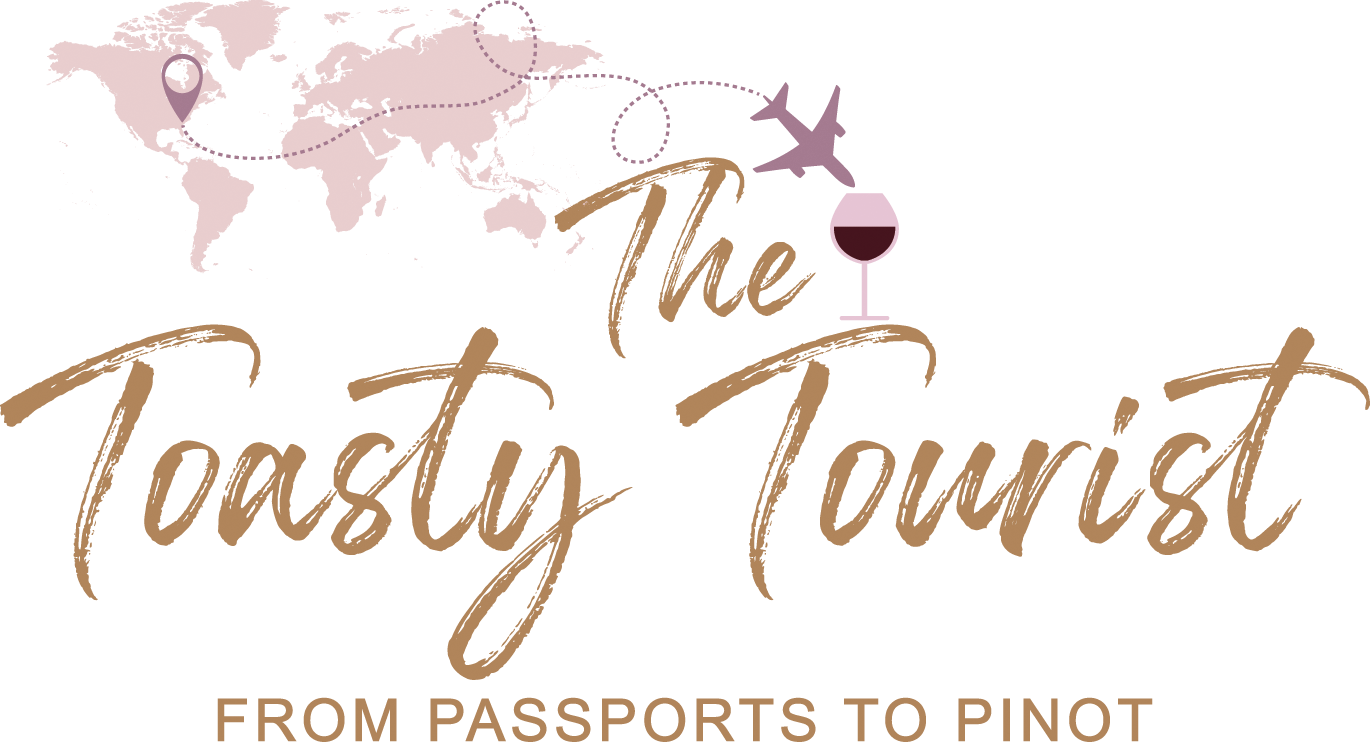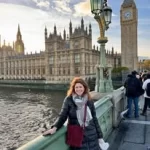Jungfrau Region in 3 Days: Switzerland’s Most Spectacular Scenery

Our typical trips center around city activities like museums, architecture, and theater, so I’ll admit—I was nervous about switching things up for Switzerland. Would we be “outdoorsy” enough? Would the trip feel fast-paced and varied enough for us? Turns out, those worries were completely unfounded. This ended up being one of my favorite trips ever! We kicked things off in the alpine Jungfrau Region, tucked right in the heart of Switzerland.
The Jungfrau region gets its name from the towering Jungfrau (“maiden”) mountain, which—together with the Eiger (“ogre”) and the Mönch (“monk”)—forms a dramatic alpine trio that dominates the skyline. Local lore says the monk stands as a protector between the ogre and the maiden.


If you’re traveling through Switzerland with multiple stops, the Jungfrau Region is incredibly easy to reach from all the major cities. The Swiss train system makes it simple: punctual, comfortable, and far-reaching. And if you can only choose one alpine area to visit, I’d wholeheartedly recommend this one!


Where to Stay
Your main decision will be to stay in the valley or high up in the mountains. We will go over the pros and cons of each!
Interlaken
To access most of the Jungfrau Region, you’ll usually connect through Interlaken (which fittingly translates to “between the lakes”). This town sits between Lake Thun and Lake Brienz and serves as the main transportation hub for the entire area. If you’re short on time, Interlaken makes a convenient base.
It’s easily reachable by train:
- 52 minutes direct from Bern
- 2.5 hours from Lausanne (with one change)
- 1 hour 50 minutes from Zurich (with one change)
- 1 hour 50 minutes direct from Lucerne (with gorgeous views of the Brünig Pass)


As for things to do, there’s no shortage: paragliding, boat tours, and the spectacular Harder Kulm lookout point are just a few options. Plus, you’ll find plenty of hotels, chalets, and restaurants to choose from.
That said, staying in Interlaken does come with a trade-off. While it’s convenient, the town itself isn’t as picturesque as the smaller mountain villages. You’ll see the Alps, but you won’t quite feel like you’re in the Alps. For that reason, I’d only recommend staying here if you have just one night in the region.
Best for: convenience, easy transportation connections, and quick overnight stays.


Lauterbrunnen
From Interlaken, it’s just a 20-minute train ride to Lauterbrunnen, a picturesque valley town that also serves as the gateway to the mountain villages of Wengen, Mürren, and Gimmelwald (reached by cable car, cogwheel railway, or bus—I loved the variety of transportation methods!).
Lauterbrunnen is famous for its 72 waterfalls (yes, seventy-two!). The most iconic is Staubbach Falls, which you can spot from nearly anywhere in town and is the star of most photos you’ll see of the area.
As one of the larger villages, Lauterbrunnen has plenty of hotel and restaurant options. It’s also a good choice if you’re traveling by car, since many of the higher alpine villages are car-free.
For us, though, the cars were actually a drawback. We preferred the fresh mountain air and the peaceful, traffic-free charm of the other villages further up in the Alps!
Best for: waterfall views, good hotel options, and car travelers.


Mountain Villages – Grindelwald, Wengen, Murren, Gimmelwald
Wengen
We chose to stay in Wengen, just east of Lauterbrunnen. It’s a quick 10-minute cogwheel train ride from Lauterbrunnen, and honestly, the extra ride was no issue at all. We loved it here!
In June, the village was lush, green, and full of wildflowers—like stepping into a postcard. Wengen also has a direct cable car to Männlichen (a popular hike with incredible views) and easy access to the Jungfraujoch.
Best for: postcard scenery, easy access to Jungfraujoch, and a peaceful alpine stay.


Murren
Mürren can be reached by cable car (or a bus/cable car combo) from Lauterbrunnen. The town feels wonderfully clean, fresh, and peaceful.
If a trip to the Schilthorn is on your list, Mürren makes a perfect base—it puts you halfway up already! I’d definitely consider staying here on a future trip.
Best for: Schilthorn access, quiet charm, and stunning mountain views.
Gimmelwald
Tiny Gimmelwald is perched on a cliff near Mürren and is by far the smallest, most authentic village on this list. If you’re after a quiet, less touristy experience, this is your spot.
The trade-off? Limited restaurants and lodging, so it’s best for travelers who don’t mind keeping things simple.
Best for: authenticity, peace and quiet, and getting off the tourist track.
Grindelwald
Probably the most famous of the villages, Grindelwald has excellent tourist infrastructure to match. If Grindelwald First (with its adventure activities and jaw-dropping views) is a must-do, this is your easiest base.
It’s also a great hub for adventure sports—paragliding, mountain carts, and more. The vibe here will be busier and more built up than in the smaller villages. This is also not one of the car-free villages, so if that is important to you, Grindelwald is not a good choice.
Best for: adventure activities, lively atmosphere, and easy access to Grindelwald First.


Thun or Brienz
These scenic towns sit just outside Interlaken—Brienz to the east and Thun to the west. They’re great options if you’ve already done many of the mountain excursions and want to explore a different side of the region.
In Brienz, you’ll find the Brienzer Rothorn scenic train, easy access to the Aare Gorge, the Giessbach waterfall, and the picture-perfect neighboring village of Iseltwald.
In Thun, highlights include the St. Beatus Caves, Thun Castle, and nearby Spiez, where you can sip wine among lakeside vineyards.
If you’re coming from Lucerne, Brienz makes for an easy hop, while Thun is simple from Bern. That said, if your trip is packed with mountain activities, there are villages with better alpine access.
(Brienz) Best for: lakeside beauty, scenic train rides, and charming villages.
(Thun) Best for: castles, caves, vineyards, and a cultural mix with fewer crowds.


3 Day Itinerary
In a place like this, where options are truly endless, the best plan is to choose activities that match what you enjoy most. There are so many so-called “must-dos” that it’s impossible to fit them all in—so don’t even try! Instead, lean into the things that excite you personally, and let go of the rest without guilt.
If you are in the Alps for 3 days, consider a “mountain peak” day, a day focused more on hiking and soaking in village charm, and a day of “other” activities that interest you (waterfalls, lake time, etc). Since the views are so dependent on weather conditions, I would wait to schedule this day as late as possible. Each morning, take a look at the extremely helpful mountain cams to see how visibility is. The first clear day, head to a mountain top! Links to the live cams around the Jungfrau region can be found here: Mannlichen, Schilthorn, Jungfraujoch, and Grindelwald First.


Day 1: Mountain Peak Day
There are 3 main “high mountain” options in the Jungfrau Region – Jungfraujoch, Schilthorn, and Grindelwald First. Which one to choose depends on the type of experience you enjoy. Your choice will also inform the travel pass you purchase for your time there (unlike many places, travel passes in Switzerland are worth purchasing)!
Jungfraujoch
The Jungfraujoch, also known as the Top of Europe, sits on a saddle of the Aletsch Glacier (the largest glacier in Europe) in the Jungfrau area—not actually on the mountain’s peak. This is one of the most popular attractions in Switzerland, so it’s smart to arrive early to avoid the tour groups.
Trains run from Kleine Scheidegg to the Jungfraujoch about once an hour, taking roughly 41 minutes and tunneling through both the Eiger and the Mönch—a true feat of Swiss engineering!


At the snowy summit, highlights include the Sphinx Observatory, Lindt Swiss Chocolate Heaven, sledding or tubing, and wandering through the Ice Palace. Expect this excursion to take up most of the day. You could pair it with the summer hike from Männlichen to Kleine Scheidegg (trails typically open mid-June).
Check here for current ticket prices – it is not cheap! If Jungfraujoch is a must-do item for you, check out the Jungfrau Pass for discounts. If you are NOT doing Jungfraujoch, the Berner Oberland Pass will probably make more sense – it covers more travel routes and attractions overall.


Schilthorn
We chose avoid some crowds and visit the Schilthorn, located above Mürren and Gimmelwald, Besides having a great view all the way to the French Alps, the Schilthorn was made famous as a filming location in the James Bond movie On Her Majesty’s Secret Service. I’m not a huge James Bond person, but we watched the film before our visit—and I’m glad we did!
To reach the summit, you’ll ride a series of newly reconstructed cable cars. At the top, you’ll find Piz Gloria, which houses a revolving restaurant, a James Bond museum, and a gift shop. From here, you can soak in snowy views on the panoramic terrace or head out to the observatory. On a clear day, you can even see Mont Blanc – the highest Alp!



On the way down, make sure to stop at the Birg Thrill Walk. Built on the side of a cliff, this walkway lets you crawl through tunnels and cross metal grating while hanging above a dizzying vertical drop. It was closed while we were there, but walking out on the glass terrace was enough of a thrill for me!
Check here for current ticket prices, and if you choose the Schilthorn for your mountain day, check out the Berner Oberland Pass for free access!
Grindelwald First
Grindelwald First (pronounced “Fearst”) is a popular excursion point above the village of Grindelwald, known for its mix of alpine views and activities. To get there, you’ll take a gondola from Grindelwald up to the First summit station in about 25 minutes.


At the top, you can stroll the First Cliff Walk, a suspended walkway and viewing platform with a panoramic view. Adventure-seekers will love the activities here: the First Flyer (a zipline), First Glider (a hang-glider-style ride), mountain carts, and trotti bikes that let you zoom back down toward the valley.
Of course, you don’t have to be a thrill-seeker to enjoy Grindelwald First—there are also excellent hiking trails, including the route to Bachalpsee, a serene alpine lake framed by mountain peaks. I’m looking forward to doing this hike next time!
Current ticket prices can be found here, and the Berner Oberland Pass offers a discount on the cable car there, while the Jungfrau Pass covers the full fare, but neither covers the available activities.
Day 2: Mountain Hiking/Village Exploration Day
I could spend days riding various cable cars, gondolas, and trains around the Jungfrau Region! There is an overabundance of gorgeous scenery throughout the region, and you never know what treasure is around the corner. I like getting a ride up as high as possible, then making my way back down – much easier hiking that way!
Swiss trails are well marked (although we suspect the distances are longer than stated, haha)! Stick to yellow for easy hiking paths, white-red-white for more challenging mountain trails (if you are wearing good shoes, these are very doable), and white-blue-white for more serious routes that may require extra equipment.



Mannlichen
One of the most popular (and scenic!) hikes in the Jungfrau Region is the trail from Männlichen to Kleine Scheidegg. The path itself is wide, mostly flat, and takes about 1.5 hours at a leisurely pace — though you’ll want to add in plenty of time for photo stops!
If you’re up for a challenge, you can start by hiking up to the Männlichen peak (The Royal Walk) from the cable car station. This uphill section is short but steep, and it’s definitely the most grueling part of the route. Your reward is a sweeping 360° panorama that makes the climb more than worth it.
Getting there is easy:
- From Wengen, take the cable car straight up to Männlichen.
- From Grindelwald, ride the gondola to reach the same point.
Once you finish in Kleine Scheidegg, you’ve got options:
- Continue on to Grindelwald via gondola (about 40 minutes).
- Or hop on the cogwheel train back to Wengen (25 minutes) or all the way down to Lauterbrunnen (40 minutes).
This is a flexible outing — you can make it a quick half-day adventure or build it into a longer day of exploring Grindelwald or Lauterbrunnen Valley.



Murren/Lauterbrunnen Area Hikes
There are several popular hikes around the car-free village of Mürren, and most start at the top of the Allmendhubel funicular. Once you ride up, you’ll find a playground (this spot is perfect for kids!) and a restaurant with gorgeous views. From there, you can pick one of the well-marked trails that wind back down to Mürren. Despite being in such a famous tourist area, the hikes feel surprisingly peaceful—like you’ve got your own private corner of the Alps. This was one of my favorite activities from the entire trip!


Once you are back in Murren, explore the town if you haven’t already! You can then go down to Lauterbrunnen for a waterfall walk. The imposing Staubbach Falls and Trummelbach Falls are both worth a visit, especially if it has recently rained. This area was Tolkien’s inspiration for Middle-earth! If you need a snack, you will find farm fridges along the way with local cheeses and other products.
Schynige Platte to First
The hike from Schynige Platte to Grindelwald First is one of the most famous long-distance trails in the Jungfrau region.. It takes about 6–7 hours, so it’s a full-day adventure! Along the way you’ll cross alpine meadows, pass by clear blue lakes, and enjoy views of the Eiger, Mönch, and Jungfrau peaks. This hike is considered more challenging than many in the area, so make sure to be prepared with sunscreen, food, and water!
To start, take the cogwheel train from Wilderswil up to Schynige Platte. At the end of the hike in Grindelwald First, you can descend via gondola (about 25 minutes) into the village of Grindelwald, where trains connect you back to Lauterbrunnen, Wengen, or Interlaken. You could also try doing the reverse hike for more downhill!
Day 3: Choose Your Own Adventure
I will provide a few suggestions in the Jungfrau region based on what we did and enjoyed, but the possibilities are nearly endless! We used our third day to explore some other natural wonders in the area, but you may want to seek some more thrills by paragliding in Interlaken! Whatever you do, rest assured it will be memorable!


Aare Gorge (Aareschlucht)
I was dying to visit the Aare Gorge to see if the turquoise-blue water was just a social media trick—and I’m happy to report, it’s exactly that stunning in real life! The gorge is located near Meiringen, about a 30-minute train ride from Interlaken.
From Meiringen, a short 10-minute train takes you to either the west or east entrance of the gorge, depending on which stop you choose. I’d recommend starting at the east (Ost in German) entrance. Traffic flows both ways through the gorge, but starting on the east side gives you a mostly downhill walk.
It took us about an hour to walk through, with plenty of stops for photos. For an extra magical experience (and fewer crowds), try to go early in the day.
Lake Brienz Boat Tour
We chose a Lake Brienz boat tour because it was free with our Berner Oberland Pass , and we were already on that side of Interlaken since our first stop was the Aare Gorge. We took the train from the gorge to Brienz, and the boat dock was right next door—so we hopped right on.


I had originally planned to explore the town, but it was hot, and I wanted some fresh lake air instead! The color of the water was absolutely unbelievable, and we loved seeing all the adorable towns along the way back to Interlaken, like Iseltwald. You could also make a stop to visit Giessbach Falls along the route!
Harder Kulm
The Harder Kulm lookout is just a 10-minute walk from Interlaken Ost station, followed by an approximately 15-minute funicular ride—some of which travels through a tunnel inside the mountain. The funicular departs every 30 minutes, so be sure to check the timetable.


At the top, there’s a surprisingly good restaurant, and the views are spectacular. Enjoying fondue while overlooking Interlaken and the surrounding lakes was a highlight of our trip! There are also various hikes and playgrounds if you’re traveling with kids.
What to Eat
If you’ve been considering a trip to Switzerland, I’m sure you’ve heard how expensive it can be. To save a bit, we grabbed quite a few lunches from Coop supermarkets! They’re located throughout the Jungfrau region and have a great selection of ready-made sandwiches—perfect to take along on a hike. I absolutely loved the chicken schnitzel sandwich!
Fondue is traditionally a winter dish, but despite going in June, I made sure to have it about nearly every other day during our trip. I love fondue and raclette, and those alpine hikes definitely burned off the cheese! My favorite fondue was at the Harder Kulm Panorama Restaurant, though the restaurant at Jungfraublick in Wengen was a close second.


Another hearty alpine dish to try is Alplermagronen—a rich mix of macaroni, potatoes, cheese, caramelized onion, and bacon. So indulgent and delicious! You’ll also find schnitzels and cordon bleus on most alpine menus.
I have to give a shout-out to the Maya Caprice restaurant in Wengen (we stayed at the hotel). The view is one of the best in the village, and they have the option of take-away pizza (not a bad budget choice), or a sit-down restaurant with upscale Italian fare. Our servers were wonderful!


Final Thoughts on the Jungfrau Region
The Jungfrau Region truly has something for everyone—majestic mountains, charming alpine villages, easy and challenging hikes, spectacular views, and delicious Swiss cuisine. Whether you’re cruising across Lake Brienz, exploring the Aare Gorge, riding the train to Jungfraujoch, or enjoying a scenic fondue at Harder Kulm, there’s no shortage of unforgettable experiences.
Even if you only have three days, you can get a perfect mix of adventure, relaxation, and classic alpine charm. The key is to choose the activities that excite you most and embrace the scenery along the way. For anyone considering a trip to Switzerland, the Jungfrau Region is an absolute must-see—it’s one of those destinations that will stay in your memory long after the trip is over.


Related
Related Posts
One Amazing Day in Zermatt, Switzerland: The Best of the Matterhorn Village
If you don’t have multiple leisurely days to devote to seeing everything Zermatt has to …
Related
Christmas in London: Sparkling Lights, Joy, and Magic Everywhere
If you seek a destination full of festive spirit this season, spending Christmas in London …
Related
Cookie Consent
We use cookies to improve your experience on our site. By using our site, you consent to cookies.
This website uses cookies
Websites store cookies to enhance functionality and personalise your experience. You can manage your preferences, but blocking some cookies may impact site performance and services.
Essential cookies enable basic functions and are necessary for the proper function of the website.
These cookies are needed for adding comments on this website.
Statistics cookies collect information anonymously. This information helps us understand how visitors use our website.
Google Analytics is a powerful tool that tracks and analyzes website traffic for informed marketing decisions.
Service URL: policies.google.com (opens in a new window)
Marketing cookies are used to follow visitors to websites. The intention is to show ads that are relevant and engaging to the individual user.





